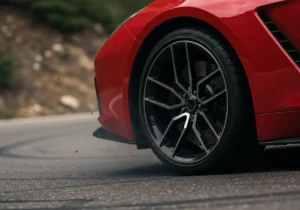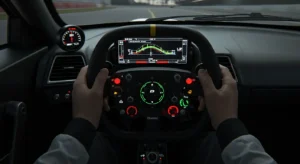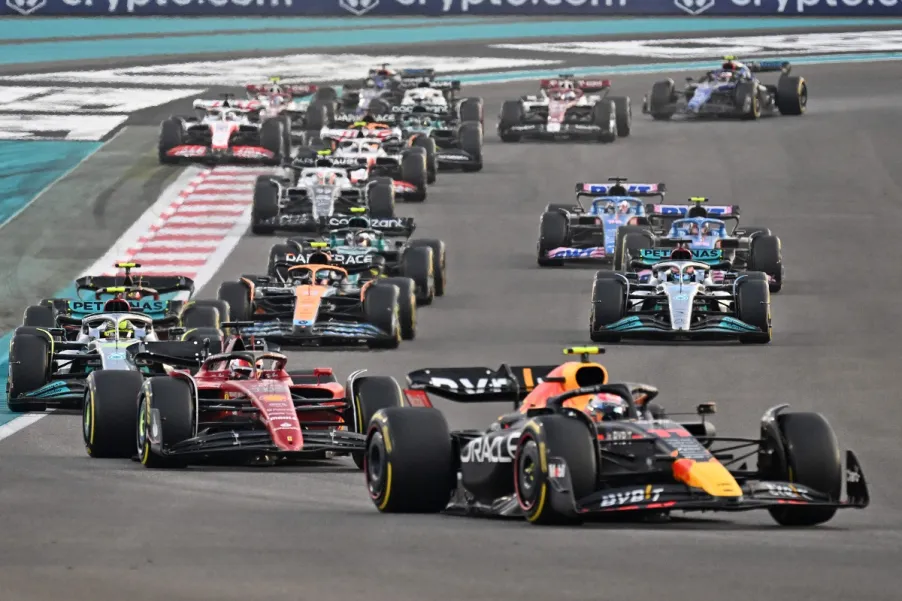Why Lap Time is the Ultimate Benchmark
Lap time is the most objective measure of driving performance. It captures the combined effectiveness of the car, the driver, and strategy. While bragging rights often revolve around peak speed, it’s the driver who can link together consistent, smooth, and precise laps who usually stands at the top of the leaderboard. Every section of track offers an opportunity to lose or gain tenths of a second—and those tenths quickly add up.
1. Braking Mastery: Gaining Time Where Others Lose It
Braking is where most amateur drivers give away the largest chunks of time. Professional instructors emphasize that braking isn’t just about slowing down—it’s about positioning the car for the fastest possible corner exit.
- Threshold Braking: Apply maximum braking force without locking wheels. Modern ABS can help, but skilled footwork is still required.
- Trail Braking: Gradually release brake pressure as you turn in, transferring weight to the front tyres to increase grip and rotate the car.
- Consistent Markers: Use trackside boards, cones, or even shadows to hit the same braking point every lap.
As one instructor explains, “Late braking impresses spectators, but early and controlled braking often wins races.”
2. Cornering Science: Entry, Apex, and Exit
Every corner can be broken down into three key stages: entry, apex, and exit. Your lap time depends on optimizing all three.
- Entry: Set up wide, brake smoothly, and aim for stability. Entering too fast usually ruins the exit.
- Apex: This is the pivot point. Whether you take an early, mid, or late apex depends on corner geometry. Late apexes often yield better exit speed.
- Exit: Focus on smooth throttle application. The earlier you accelerate out, the more speed you carry down the straight.
Remember, lap time is often won on the exit, not the entry.

3. The Racing Line: Path of Least Resistance
The racing line isn’t about shortest distance—it’s about maximizing average speed. Expert drivers use every inch of track surface to maintain momentum. For beginners, key tips include:
- Approach wide, clip the apex, and exit wide for maximum radius.
- Sacrifice a corner if it sets you up better for a faster following section.
- Always look through to the next corner to plan ahead.
4. Smooth Inputs: The Art of Consistency
Steering, throttle, and brake inputs should be deliberate, not jerky. Instructors often use the mantra: “Slow hands, fast laps.” Quick, aggressive movements overload tyres and destabilize the chassis. Smoothness helps maintain grip and flow, reducing wasted motion.
5. Tyre Management: Grip is King
Your tyres are the most important performance part of your car. Maintaining them properly can mean the difference between shaving seconds or sliding off pace.
- Pressure: Set pressures slightly below road spec—heat will increase PSI on track.
- Heat Cycles: Warm tyres gradually. Cold rubber lacks grip, while overheated tyres lose consistency.
- Wear Patterns: Regularly inspect tread for uneven wear—it may indicate setup issues.
6. Data and Telemetry: Learning from Numbers
Data logging isn’t just for pros anymore. Affordable GPS lap timers and apps provide instant feedback on speed, throttle, braking, and lines. Comparing your data to a more experienced driver’s overlay can reveal surprising opportunities to improve lap time by small adjustments in technique.

7. Mental Focus and Visualization
Motorsport performance is as much mental as it is mechanical. Visualization, mindfulness, and calm focus help drivers remain consistent under pressure.
- Rehearse the lap in your mind before driving.
- Stay relaxed—tense arms or legs reduce control.
- Focus on rhythm, not chasing a “hero lap.”
8. Physical Fitness: Building Driver Endurance
Endurance racing shows just how physically demanding driving can be. Strong core, neck, and cardiovascular fitness improve concentration and reaction time. Even sprint racers benefit from fitness routines designed for precision sports.

9. Car Setup: Mechanical Confidence
A driver who trusts their car pushes harder with confidence. Focus on basics first:
- Brake fluid and pads suitable for track use.
- Suspension alignment optimized for handling, not just tire longevity.
- Balanced weight distribution and predictable handling.
However, never let setup compensate for poor driving habits. Skill first, setup second.
10. Coaching and Instruction
Nothing accelerates progress like a professional instructor. Coaches provide instant feedback, fix bad habits early, and often unlock gains that self-practice cannot. Consider booking a session at your next track day to invest directly in your skill.
11. Using Track Walks and Track Notes
Walking the circuit before driving provides unique insights. You’ll notice surface changes, bumps, and grip variations invisible at speed. Many pros keep a track diary with notes for each circuit—helping refine technique lap after lap.
12. Common Mistakes Holding Back Lap Times
- Overdriving into corners and sacrificing exits.
- Failing to cool down brakes and tyres after sessions.
- Inconsistent braking points.
- Ignoring tyre feedback and pressures.
- Chasing horsepower before mastering fundamentals.
13. Advanced Techniques
- Heel-toe downshifting: Matches engine revs to wheels, smoothing corner entries.
- Left-foot braking: Shortens response time in some cars and balances weight transfer.
- Weight transfer mastery: Using momentum shifts to your advantage in handling transitions.
Expert Insights
“Most lap time improvements come not from being braver, but from being smarter. Smooth exits, consistent braking, and patience often yield seconds on the stopwatch.” — Motorsport Instructor, Silverstone Circuit
Conclusion
Improving lap times is a journey of refinement, patience, and discipline. By mastering braking, cornering, and consistency, while using data, coaching, and preparation, you can steadily improve lap time. Remember: smoother is faster, and the stopwatch rewards drivers who think as much as they drive. Take these expert-backed tips to your next track session, and watch the seconds fall away.



